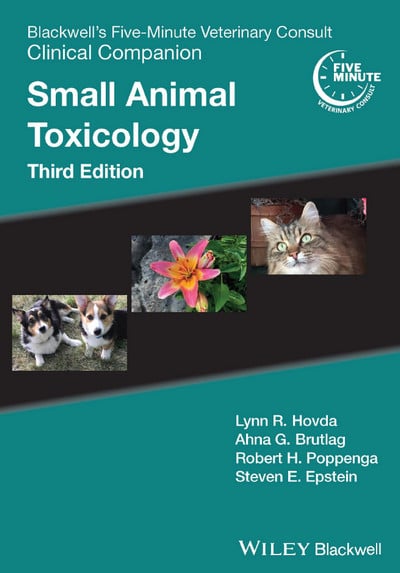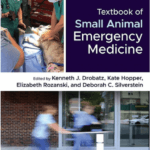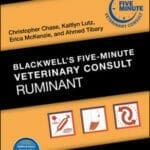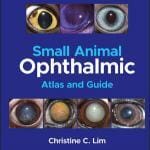Blackwell’s Five-Minute Veterinary Consult Clinical Companion: Small Animal Toxicology, 3rd Edition

By Lynn R. Hovda, Ahna G. Brutlag, Robert H. Poppenga and Steven E. Epstein
Blackwell’s Five-Minute Veterinary Consult Clinical Companion: Small Animal Toxicology, Third Edition is an essential resource for managing poisonings in dogs and cats. Using the familiar Five-Minute Veterinary Consult format, the book makes it quick and easy to find the crucial details for successfully managing toxicology cases in dog and cat patients. Toxins are listed alphabetically with key details in brief bullets, with clinical photographs depicting plants and other toxins for identification purposes.
The Third Edition adds 11 new chapters, including pet food, CBD, gabapentin, and more, and 2 new appendices discussing anthelmintics and calculations.
Blackwell’s Five-Minute Veterinary Consult Clinical Companion: Small Animal Toxicology:
- Makes it easy to locate and apply pertinent information in a time-sensitive poisoning situation
- Presents toxins in alphabetical order for ease of use, with an index by clinical signs to help develop differential lists when the toxin isn’t known
- Features clinical photographs to aid in identifying toxins
- Emphasizes clinically relevant details for the most common toxins presenting in small animal practice
- Adds 11 new chapters and 2 new appendices, plus expanded and updated information throughout
Blackwell’s Five-Minute Veterinary Consult Clinical Companion: Small Animal Toxicology is a must-have resource for general practice and emergency vets, veterinary students, and anyone who might take a call about a suspected poisoning.
Read more: Blackwell’s Five-Minute Veterinary Consult Clinical Companion Small Animal Dentistry, 3rd Edition
Table of Contents
Section 1 Clinical Toxicology
- Chapter 1 Decontamination and Detoxification of the Poisoned Patient
- Chapter 2 Emergency Management of the Poisoned Patient
- Chapter 3 Antidotes and Other Useful Drugs
- Chapter 4 Identification and Management of the Unknown Toxicant
- Chapter 5 Laboratory Diagnostics for Toxicology
- Chapter 6 Medico-legal Considerations for Companion Animal Practitioners
- Chapter 7 Pet Food
Section 2 Specific Toxins and Toxicants
- Alcohols and Glycol Ethers
- Chapter 8 Alcohols
- Chapter 9 Ethylene Glycol and Diethylene Glycol
- Chapter 10 Propylene Glycol
- Construction and Industrial Materials
- Chapter 11 Glues and Adhesives
- Chapter 12 Hydrocarbons
- Chapter 13 Hydrofluoric Acid
- Drugs: Human Prescription
- Chapter 14 5-Fluorouracil
- Chapter 15 Amphetamines
- Chapter 16 Angiotensin-Converting Enzyme Inhibitors
- Chapter 17 Antiseizure Medications (Lamotrigine, Phenobarbital, Others)
- Chapter 18 Atypical Antipsychotics (Abilify® and Others)
- Chapter 19 Baclofen
- Chapter 20 Benzodiazepines
- Chapter 21 Beta-2 Receptor Agonists (Albuterol and Others)
- Chapter 22 Beta Receptor Antagonists (Beta-blockers)
- Chapter 23 Calcipotriene/Calcipotriol
- Chapter 24 Calcium Channel Blockers
- Chapter 25 Colchicine
- Chapter 26 Cyclosporine A
- Chapter 27 Diuretics
- Chapter 28 Estrogen and Progesterone
- Chapter 29 Gabapentin
- Chapter 30 Nonbenzodiazepine Sleep Aids
- Chapter 31 Opiates and Opioids
- Chapter 32 SSRI and SNRI Antidepressants
- Chapter 33 Tacrolimus
- Chapter 34 Thyroid Hormones (T3 and T4)
- Drugs: Illicit and Recreational
- Chapter 35 Cannabidiol (CBD)
- Chapter 36 Club Drugs (MDMA, GHB, Flunitrazepam, Bath Salts)
- Chapter 37 Cocaine
- Chapter 38 Lysergic Acid Diethylamide (LSD)
- Chapter 39 Marijuana (THC)
- Chapter 40 Methamphetamine
- Chapter 41 Miscellaneous Hallucinogens and Dissociative Agents
- Chapter 42 Opiates and Opioids (Illicit)
- Chapter 43 Phencyclidine (PCP)
- Chapter 44 Synthetic Cannabinoids
- Drugs: Over the Counter
- Chapter 45 Acetaminophen
- Chapter 46 Aspirin
- Chapter 47 Calcium Supplements
- Chapter 48 Decongestants (Imidazolines)
- Chapter 49 Decongestants (Pseudoephedrine, Phenylephrine)
- Chapter 50 Dextromethorphan
- Chapter 51 Human NSAIDs (Ibuprofen, Naproxen)
- Chapter 52 Loperamide
- Chapter 53 Minoxidil
- Chapter 54 Nicotine and Tobacco
- Chapter 55 Vitamins and Minerals
- Drugs: Veterinary Prescription
- Chapter 56 Alpha-2-adrenergic Agonists
- Chapter 57 Isoxazolines
- Chapter 58 Macrocyclic Lactones
- Chapter 59 Phenylpropanolamine
- Chapter 60 Pimobendan
- Chapter 61 Veterinary NSAIDs
- Envenomations and Internal Toxins
- Chapter 62 Black Widow Spiders
- Chapter 63 Brown Recluse Spiders
- Chapter 64 Crotalids (Pit Vipers)
- Chapter 65 Elapids (Coral Snakes)
- Chapter 66 Other Zootoxins (Venomous Lizards [Heloderma], Poisonous Salamanders [Newts], and Frogs)
- Chapter 67 Scorpions
- Chapter 68 Toads
- Chapter 69 Wasps, Hornets, and Bees
- Foods
- Chapter 70 Bread Dough
- Chapter 71 Chocolate and Caffeine
- Chapter 72 Grapes and Raisins
- Chapter 73 Hops
- Chapter 74 Macadamia Nuts
- Chapter 75 Mycotoxins (Aflatoxin)
- Chapter 76 Mycotoxins (Tremorgenic)
- Chapter 77 Onions and Garlic
- Chapter 78 Salt (Sodium Chloride)
- Chapter 79 Xylitol
- Foreign Objects
- Chapter 80 Foreign Objects
- Garden, Yard, and Farm Chemicals
- Chapter 81 Bone and Blood Meal
- Chapter 82 Diquat and Paraquat
- Chapter 83 Fertilizers
- Chapter 84 Herbicides
- Chapter 85 Methionine
- Herbals
- Chapter 86 Ephedra (Ma Huang)
- Chapter 87 Essential Oils and Liquid Potpourri
- Chapter 88 Tea Tree Oil (Melaleuca Oil)
- Home Care and Recreational Products
- Chapter 89 Acids
- Chapter 90 Alkalis
- Chapter 91 Batteries
- Chapter 92 Matches and Fireworks
- Chapter 93 Mothballs
- Chapter 94 Paintballs
- Chapter 95 Phenols and Pine Oils
- Chapter 96 Soaps, Detergents, Fabric Softeners, Enzymatic Cleaners, and Deodorizers
- Insecticides and Molluscicides
- Chapter 97 Amitraz
- Chapter 98 Imidacloprid and Other Neonicotinoids
- Chapter 99 Metaldehyde
- Chapter 100 Miscellaneous Insecticides (Fipronil and Spinosad)
- Chapter 101 Organophosphorus and Carbamate Anticholinesterase Pesticides
- Chapter 102 Pyrethrins and Pyrethroids
- Metals and Metalloids
- Chapter 103 Iron
- Chapter 104 Lead
- Chapter 105 Zinc
- Nondrug Consumer Products
- Chapter 106 Glow Jewelry and Toys (Dibutyl Phthalate)
- Chapter 107 Fluoride
- Plants and Biotoxins
- Chapter 108 Azaleas and Rhododendrons
- Chapter 109 Blue-green Algae (Cyanobacteria): Anatoxin-A
- Chapter 110 Blue-green Algae (Cyanobacteria): Microcystins
- Chapter 111 Blue-green Algae (Cyanobacteria): Others
- Chapter 112 Cardiac Glycosides
- Chapter 113 Cyanogenic Glycosides
- Chapter 114 Lilies
- Chapter 115 Mushrooms
- Chapter 116 Oxalates (Insoluble)
- Chapter 117 Oxalates (Soluble)
- Chapter 118 Sago Palm (Cycads)
- Chapter 119 Spring Bulbs
- Chapter 120 Yesterday, Today, and Tomorrow Plant
- Chapter 121 Yew
- Rodenticides
- Chapter 122 Anticoagulant Rodenticides
- Chapter 123 Bromethalin
- Chapter 124 Cholecalciferol
- Chapter 125 Sodium Monofluoroacetate (Compound 1080®)
- Chapter 126 Phosphides
- Chapter 127 Strychnine
- Toxic Gases
- Chapter 128 Carbon Monoxide
- Chapter 129 Smoke Inhalation
Section 3 Reference Information
- Appendix 1 Abbreviations
- Appendix 2 Anthelmintics
- Appendix 3 Information Resources for Toxicology
- Appendix 4 Other Metallic Toxicants
- Appendix 5 Calculations for the Evaluation of Toxicity
- Appendix 6 Topical Toxins: Common Human OTC Dermatological Preparations
- Appendix 7 Toxic Plants: Clinical Signs, Antidotes, and Treatment
- Index by Toxins and Toxicants
- Index by Clinical Signs and Syndromes










































